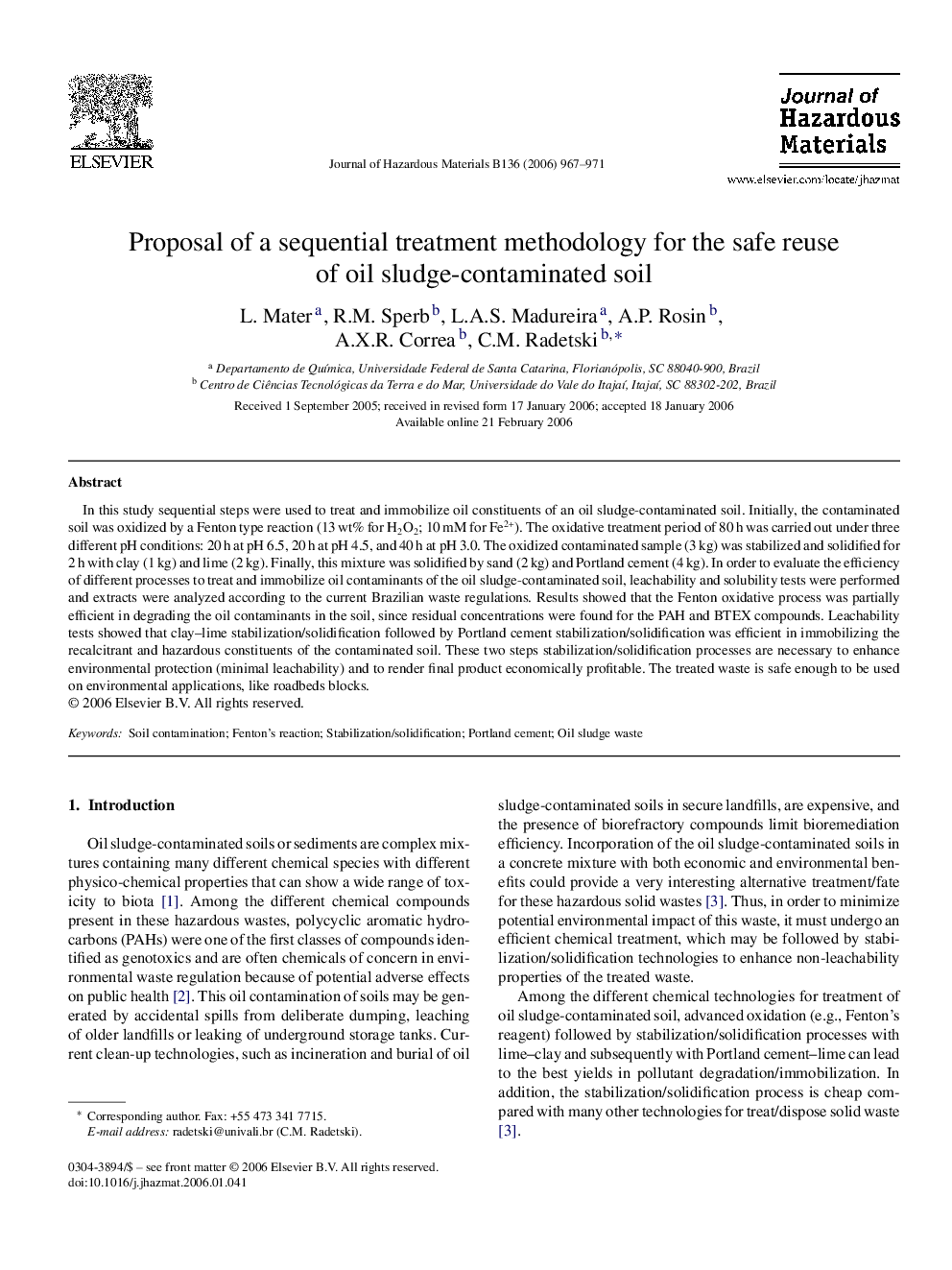| Article ID | Journal | Published Year | Pages | File Type |
|---|---|---|---|---|
| 585624 | Journal of Hazardous Materials | 2006 | 5 Pages |
In this study sequential steps were used to treat and immobilize oil constituents of an oil sludge-contaminated soil. Initially, the contaminated soil was oxidized by a Fenton type reaction (13 wt% for H2O2; 10 mM for Fe2+). The oxidative treatment period of 80 h was carried out under three different pH conditions: 20 h at pH 6.5, 20 h at pH 4.5, and 40 h at pH 3.0. The oxidized contaminated sample (3 kg) was stabilized and solidified for 2 h with clay (1 kg) and lime (2 kg). Finally, this mixture was solidified by sand (2 kg) and Portland cement (4 kg). In order to evaluate the efficiency of different processes to treat and immobilize oil contaminants of the oil sludge-contaminated soil, leachability and solubility tests were performed and extracts were analyzed according to the current Brazilian waste regulations. Results showed that the Fenton oxidative process was partially efficient in degrading the oil contaminants in the soil, since residual concentrations were found for the PAH and BTEX compounds. Leachability tests showed that clay–lime stabilization/solidification followed by Portland cement stabilization/solidification was efficient in immobilizing the recalcitrant and hazardous constituents of the contaminated soil. These two steps stabilization/solidification processes are necessary to enhance environmental protection (minimal leachability) and to render final product economically profitable. The treated waste is safe enough to be used on environmental applications, like roadbeds blocks.
